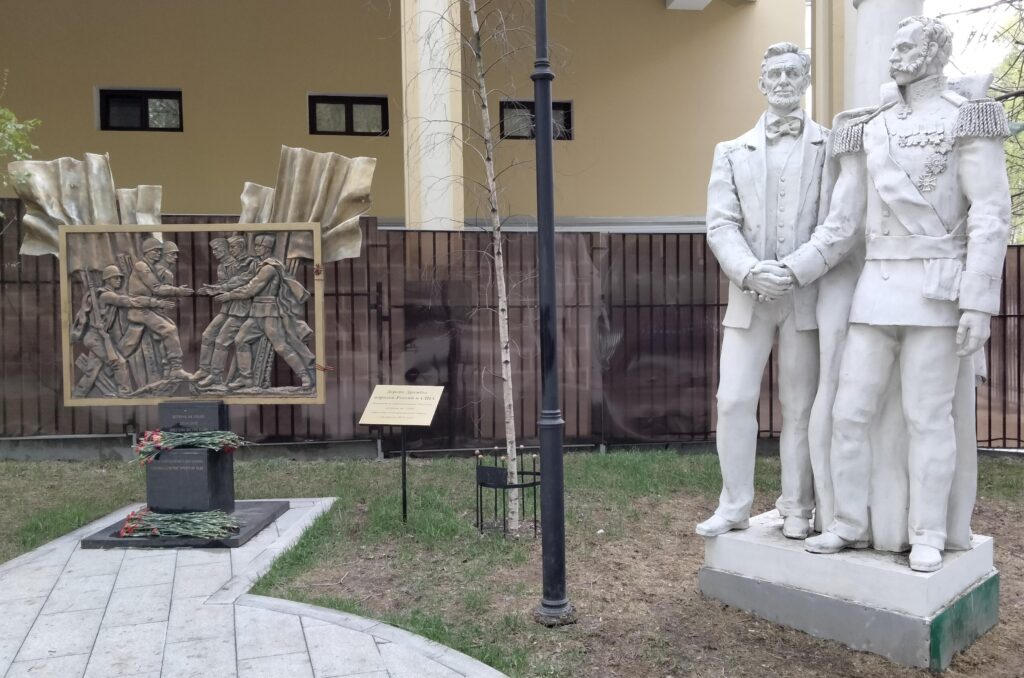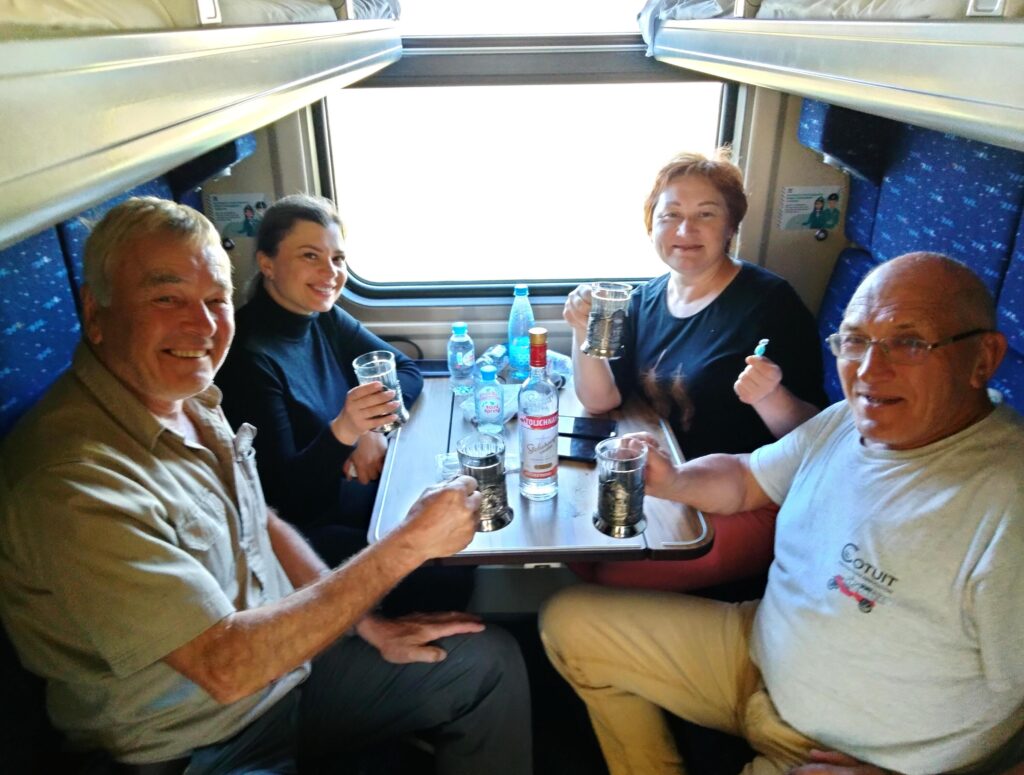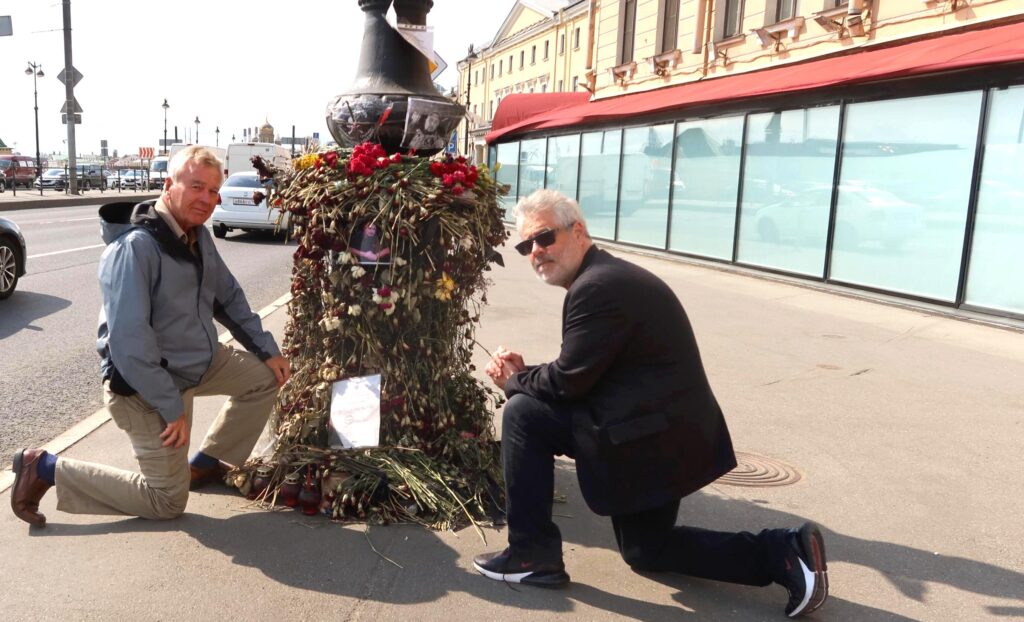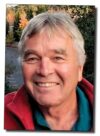Journey to St. Petersburg, Moscow & Crimea (Part 1)
TRANSCEND MEMBERS, 29 May 2023
Dan Kovalik and Rick Sterling – TRANSCEND Media Service
24 May 2023 – At the end of April of this year, the two of us ventured together to Russia. We went with the purpose of fact-finding and also to make a point that we do not believe that Russia should be isolated from the world through sanctions and travel bans.
At this moment, Russia is more isolated from the West than it has ever been, quite possibly in history. As just one example, while V.I. Lenin was able to famously travel from Finland via train to St. Petersburg, even during the height of WWI, the train from Finland to Russia ceased operating after February 24 of 2022. And indeed, it was through Finland that we decided to travel to Russia, simply because there are now very limited ways to travel there. Thus, while for years, even during the Cold War, one could easily fly directly from the US to Russia on Aeroflot and other airlines, that is no longer possible due to sanctions. Now, one can only fly there through Serbia, Turkey or the UAE, but those flights are quite expensive.
And so, we ended up choosing to fly to Helsinki, Finland and have a Russian friend who has a non-Russian passport (Russians with only Russian passports cannot travel to Finland) drive from St. Petersburg to pick us up. This turned out to be more easily said than done as our friend’s car broke down at the Finnish/Russian border. And so, we took a very expensive, three-hour cab ride to the border, met up with our friend and crammed ourselves into the cab of a tow truck to drive the remaining three hours to St. Petersburg – a quite inauspicious beginning to our journey.
St. Petersburg (Leningrad)
Our first several days were spent in St. Petersburg, formerly “Leningrad.” We stayed strategically at the Best Western in Uprising Square – so named by the new Bolshevik government in 1918 to commemorate the Great October Revolution of 1917. In the Square is located the Moscow train station which we used to great effect during our journey, as well as the Leningrad Hero-City Obelisk. The Obelisk commemorates Leningrad’s designation as one of 13 “hero cities” in the Soviet Union which distinguished themselves for their exceptional sacrifices in resisting the Nazis during WWII. Two other cities we visited on our trip (Moscow and Sevastopol, Crimea) are also honored with this designation, as is Kiev, Ukraine and of course Volgograd (formerly “Stalingrad”).
During our stay, the city of St. Petersburg sure seemed more like Leningrad, for it was beginning to be decked out in red flags with hammers and sickles and stars to commemorate both May Day and Victory Day over the Nazis on May 9. We were told by long-time residents that the ubiquitous display of such symbols of the USSR was something new (at least since the collapse of the Soviet Union in 1991), and was spurred on by Russia’s Special Military Operations beginning in February of 2022. It appears that the Russian people, and the Russian government as well, are looking to the legacy of the Soviet Union as a source of strength, pride and unity during this time of war – a war that they view, we believe quite rightly, was forced on them.
The newly released Russian Federation “concept” on foreign policy states quite explicitly that Russia’s current foreign policy is informed by the two main objectives and successes of the USSR – the defeat of Nazism and global decolonization. Certainly, on paper at least, this belies the claim of some Western leftists that Russia is motivated in its relations with other nations by imperialist concerns.
While in St. Petersburg, we visited the site of the terrorist attack which claimed the life of Russian journalist Vladlen Tatarsky and wounded over 30 others, at least 10 gravely. The attack involved the bombing of a cafe in the picturesque University district of St. Petersburg along the Neva – a soft target if there ever was one. The cafe remains closed, and three sets of memorials for Tatarsky are set up around it, consisting of flowers and photos. Of course, the Western press has tried to do everything it can to justify this vicious attack upon civilians, writing off Tatarsky as “pro-Kremlin” and “pro-war” (as if the Western press can’t be fairly characterized as “pro-war” and “pro-Pentagon”) and simply glossing over the numerous other civilians wounded in the assault as collateral damage.
Moscow
As planned, we left St. Petersburg by train to Moscow after several days. We took the faster “Sapsan” (Falcon) train to Leningrad Station in Moscow (it is still called that). The train ride, reaching 120 mph, was smooth and comfortable. We sat across from two Russian women, one of whom was quite friendly. She told us of her son who lives in Boston and who, quite sadly for her, she hasn’t seen in years. She kept sliding over hard candy to share with us. And, when she saw Dan nervously biting his nails, she kindly handed him her nail filer for him to use. This type of sharing on the train is quite common in Russia as we would continue to discover on our journey.
Moscow too was being decorated for the May 9 Victory Day celebration. Red Square was sealed off from the public to prepare for the event, and the city was on high alert for possible terrorist attacks, one of which would come while we were in Russia with the drone attack upon the Kremlin itself. Despite the fears of attack, Muscovites were out on the streets day and night. Both Moscow and St. Petersburg were incredibly vibrant – much more so than our cities back home which are still feeling the effects of the lockdowns during the pandemic. Gorky Park was particularly lively with throngs of families with children enjoying the spring weather, swings and slides. Colorful tulips were in full bloom.
From appearances, Russia largely did not appear to be a country at war. However, everyone we talked to confided in us about their concerns for the war – for the loss of life on both sides, the fact that it was lasting much longer than people had expected, and the danger that the war could expand into a greater conflagration. Some Russians expressed their fear that nuclear weapons would end up being used before this was all over, though they believed that the US would be the first to launch them. At the same time, the Russians showed their usual stoicism in the face of such dangers, with one family with whom Dan had dinner stating almost matter-of-factly that “Russia has always had difficult times, and it will have them again.”
After several days in Moscow, and our hopes for visiting the Donbass falling through, we took the long, 27-hour train ride to Crimea – a region now fully in the crosshairs of the proxy war.
Arriving in Crimea
Ukrainian President Zelensky says he will “take back” Crimea. US leaders Victoria Nuland and Jake Sullivan say they support him. Indeed, Sullivan recently suggested Ukraine is free to use the F-16 fighter jets in attempting to “recapture” Crimea.” We traveled to Crimea to see the situation and learn details of how and why Crimea seceded from Ukraine in 2014.
A highlight of the train ride was passing over the new 12-mile long Kerch Strait bridge which connects mainland Russia to the Crimean peninsula. As our train approached the bridge, we could see that saboteurs had been active. There was a fuel tank on fire in the near distance. A couple passengers did not want us to photograph this, probably thinking it gives publicity to the enemy.
As we departed the train in Crimea at the beautiful station in the Capitol city, Simferopol, the loudspeakers on the platform greeted us with traditional Russian songs.
We then drove the roughly two hours to Yalta where we stayed while in Crimea. Along our drive, we saw the giant mosque which the Russian government is building along the highway in an area where Tatars, who generally practice the Islamic faith, protested to have land to live and worship. The Tatars had been persecuted during WWII as suspected collaborators and forcibly removed from Crimea to other Soviet Republics.
A number of Tatars have moved back to Crimea over the years and now make up about 12 percent of the population of Crimea. Meanwhile, about 65 percent of the Crimean population is ethnic Russian and about 15 percent is Ukrainian, though about 82 percent of the population overall speaks Russian on a daily basis.
As we were told while in Crimea, one of the first things President Putin did after Crimea returned to Russia in 2014 was to try to make good relations with the Tatar community by “rehabilitating” them from the claims of collaboration made by Stalin government, giving them the land they protested for, providing them with modest monetary reparations and building them the new Mosque.
Historical Background
All in all, we spent five days seeing the sights and meeting people in the capital Simferopol, Sevastopopol and Yalta. We were guided by translator and native Crimean Tanya. In the past, Tanya worked for US Aid for International Development (USAID), teaching Russian to US Peace Corps volunteers.
Crimea has a rich agricultural sector. It was severely hampered after Ukraine dammed the canal bringing fresh water from the Dnieper River. After Russian forces intervened, they removed the dam and agriculture is once again thriving. Crimean cities are busy with the streets and sidewalks full. In the parks, there are teens skate boarding and seniors playing chess.
The situation in Crimea is emblematic of the Ukraine crisis overall. In both Crimea and the Donbass (eastern Ukraine), the majority of people are ethnically Russian, their native language is Russian and they voted overwhelmingly for the elected but overthrown President Yanukovich.
From the 15th century Crimea was part of the Ottoman Empire. It became part of the Russian Empire in 1783 after the army of Catherine the Great defeated the Turks.
In 1921, Crimea became the Crimean Autonomous Soviet Socialist Republic as part of the Russian Soviet Socialist Republic.
In 1954, Soviet Premier Khrushchev designated Crimea to be part of the Ukraine republic. This was done without consulting the Crimean people but it was not a major change since they were all part of one country, the Soviet Union. As we were told in Crimea, “Nobody could imagine the Soviet Union breaking up.”
As the Soviet Union was breaking up, Crimeans held a referendum in January of 1991. They voted overwhelmingly (94% in favor) to become the “Autonomous Republic of Crimea” and to separate from Ukraine. There was contention with Kiev and ultimately it was agreed that Crimea would be autonomous but within Ukraine. There was desire but not the urgency to secede from Ukraine at this point.
The desire to separate from Ukraine became more urgent in late 2013 and early 2014 as Crimeans watched with alarm as Russophobic ultra-nationalist and neo-nazi groups increasingly dominated violent protests in Kiev’s Maidan plaza. The book “To Go One’s Own Way” documents how the Crimean parliament and presidency issued statements, pleas and warnings about the threat to Ukrainian unity beginning in November 2013.
As we discuss in an upcoming article, the government of Ukraine reacted to the Crimean referendum to reunite with Russia quite punitively, and it continues to punish the Crimeans for their decision. At the same time, Russia has actively invested in the peninsula and made major improvements in the overall infrastructure there. In light of the foregoing, it is safe to say there are relatively few Crimeans who ever wish to return to Ukraine.
___________________________________________
Rick Sterling is a member of the TRANSCEND Network and an investigative journalist who lives in the SF Bay Area, California. He can be contacted at rsterling1@protonmail.com
Dan Kovalik is a human rights attorney and author of seven books.
Tags: Crimea, Russia, Ukraine
This article originally appeared on Transcend Media Service (TMS) on 29 May 2023.
Anticopyright: Editorials and articles originated on TMS may be freely reprinted, disseminated, translated and used as background material, provided an acknowledgement and link to the source, TMS: Journey to St. Petersburg, Moscow & Crimea (Part 1), is included. Thank you.
If you enjoyed this article, please donate to TMS to join the growing list of TMS Supporters.

This work is licensed under a CC BY-NC 4.0 License.





Thank you for your important work.
Don Pelton
Editor/Publisher “Sierra Voices Journal”
editor@sierravoices.com or depelton@gmail.com